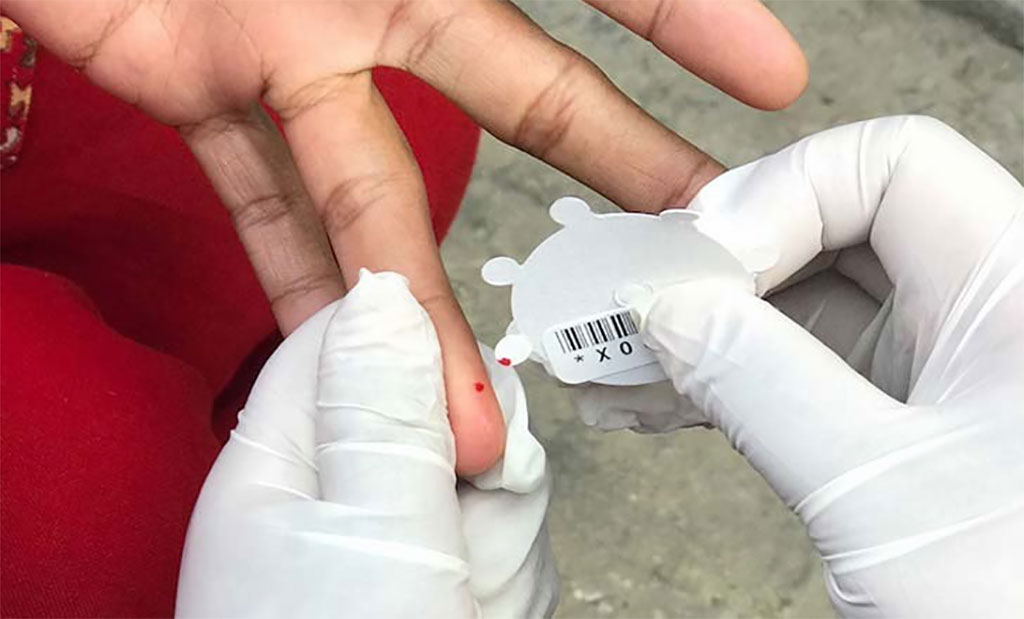New Technique Uses Dried Blood Spots to Detect Typhoid Infection More Quickly and Accurately
Posted on 02 Jul 2022
The World Health Organization (WHO) estimates that 11 to 20 million people get sick from typhoid, and between 128,000 and 161,000 people die from it every year. The life-threatening infection is caused by the bacterium Salmonella Typhi and is usually spread through contaminated food or water. It is most common in parts of the world with poor sanitation. The WHO recommends typhoid vaccines to control endemic and epidemic typhoid fever. Many countries lack the infrastructure to conduct comprehensive typhoid testing, particularly in rural areas. As a result, the incidence in Bangladesh, Nepal, Pakistan and other countries may be significantly undercounted, making it difficult to develop effective vaccination strategies. Now, a new technique for detecting typhoidal Salmonella infections can significantly help vaccination planning in countries where typhoid is prevalent.
The new approach developed by an international team of researchers, including investigators at UC Davis (Sacramento, CA, USA), detects typhoid antibodies in dried blood spots. It is faster and more accurate than blood cultures and simplifies disease detection in remote areas. In a collaborative effort, researchers from Bangladesh, Nepal, Pakistan, Ghana, Canada, South Korea, England and Germany came together to develop a tool that relies on antibody responses from dried capillary blood samples. The blood is collected using a finger prick, similar to the small amount used for a blood glucose monitor. This assay is easy to perform, can be readily accomplished in remote, rural areas and is far more accurate than blood cultures.

To develop this technology, the team collected blood spots from 1,420 people with confirmed typhoid infections in Bangladesh, Ghana, Nepal and Pakistan. They tested the samples for antibody responses against two antigens: Hemolysin E (Hlye) and Salmonella lipopolysaccharide (LPS). The researchers showed the antibody responses to both HlyE and LPS persisted for months after infection, making these antibodies excellent biomarkers to measure typhoid incidence. In addition, the researchers developed algorithms to determine when a person contracted typhoid, allowing them to measure the disease’s incidence in populations over time. To accomplish this, they measured antibody responses in a population-based sample of 1,740 children and young adults in Nepal, Pakistan, Bangladesh and Ghana. When comparing their results to existing blood culture data, they found that the true number of typhoid infections was much higher across countries and regions.
Current typhoid estimates generally come from capital cities, often the only areas with blood culturing capabilities. This leaves large regions where public health officials can only guess disease prevalence. In addition to providing more comprehensive information outside cities, the new method can also pinpoint subpopulations with high percentages of typhoid in urban areas. While the study is limited to typhoid, the researchers believe this approach could be applied to other infectious diseases, revolutionizing how nations conduct epidemiological surveillance.
“Instead of just taking a sample, looking at the person's antibody response and saying they're negative or positive, we can model the antibody decay,” said Kristen Aiemjoy, an assistant professor in the Division of Epidemiology, Department of Public Health Sciences at UC Davis, and first author of the study. “We use that decay rate to infer when those people were most likely exposed, which provides vital information about the force of infection.”
“This is a big jump for typhoid surveillance, but it's also a big methodological jump in seroepidemiology,” added Aiemjoy. “We are now planning on applying this to other infectious diseases like scrub typhus and melioidosis.”
Related Links:
UC Davis














